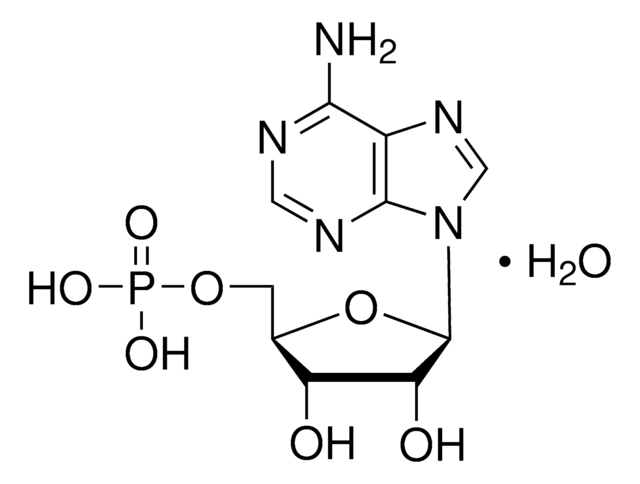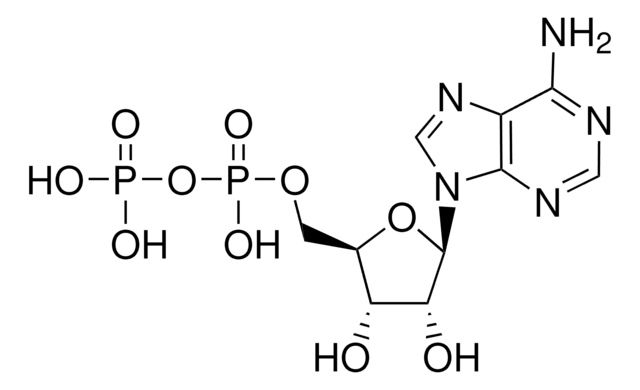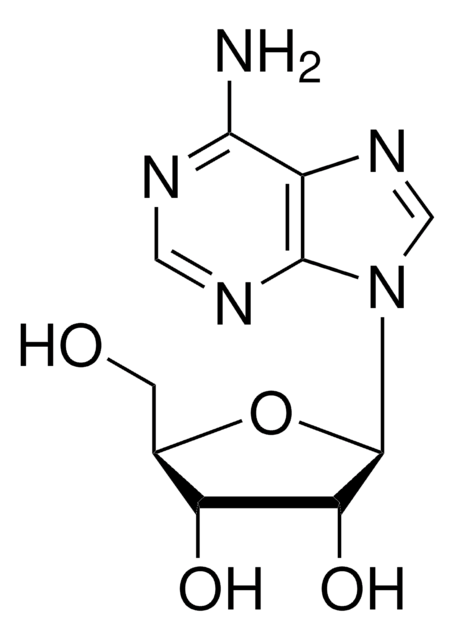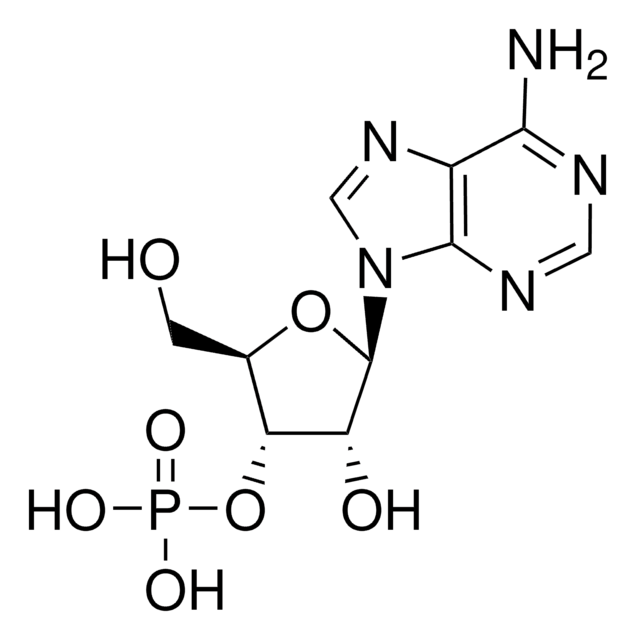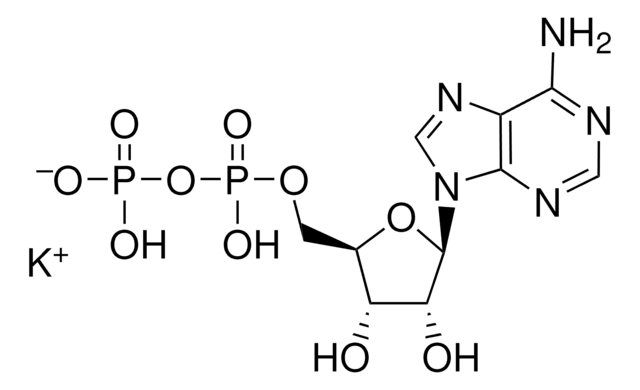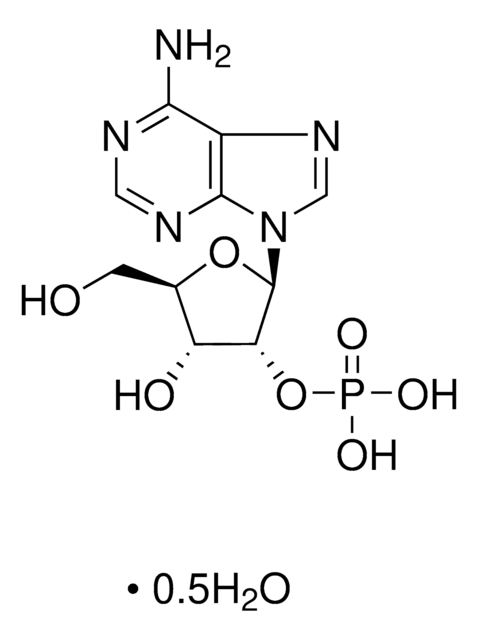01930
Adenosine 5′-monophosphate disodium salt
≥99.0% (HPLC)
Synonym(s):
5′-AMPdisodium salt,, Adenylic acid disodium salt, 5′-AMP-Na2
About This Item
Recommended Products
biological source
microbial (Candida utilis)
synthetic
Quality Level
Assay
≥99.0% (HPLC)
form
powder
optical activity
[α]20/D −43±2°, c = 1% in 0.5 M Na2HPO4 (dry matter)
impurities
≤26% water
SMILES string
[Na+].[Na+].Nc1ncnc2n(cnc12)[C@@H]3O[C@H](COP([O-])([O-])=O)[C@@H](O)[C@H]3O
InChI
1S/C10H14N5O7P.2Na/c11-8-5-9(13-2-12-8)15(3-14-5)10-7(17)6(16)4(22-10)1-21-23(18,19)20;;/h2-4,6-7,10,16-17H,1H2,(H2,11,12,13)(H2,18,19,20);;/q;2*+1/p-2/t4-,6-,7-,10-;;/m1../s1
InChI key
QGXLVXZRPRRCRP-IDIVVRGQSA-L
Looking for similar products? Visit Product Comparison Guide
Application
- as a dissolved organic phosphorus (DOP) compound to study its rate of hydrolysis in Escherichia coli lysates
- to induce calcium responses in Fura2-loaded osteoblast (C2-OB)
- as a nucleotide metabolite in the medium for the isolation, culture, and identification of glioma stem cells (GSCs)
Storage Class Code
11 - Combustible Solids
WGK
WGK 3
Flash Point(F)
Not applicable
Flash Point(C)
Not applicable
Personal Protective Equipment
Certificates of Analysis (COA)
Search for Certificates of Analysis (COA) by entering the products Lot/Batch Number. Lot and Batch Numbers can be found on a product’s label following the words ‘Lot’ or ‘Batch’.
Already Own This Product?
Find documentation for the products that you have recently purchased in the Document Library.
Customers Also Viewed
Articles
Separation of AMP (adenosine monophosphate); ATP (adenosine triphosphate)
Our team of scientists has experience in all areas of research including Life Science, Material Science, Chemical Synthesis, Chromatography, Analytical and many others.
Contact Technical Service
